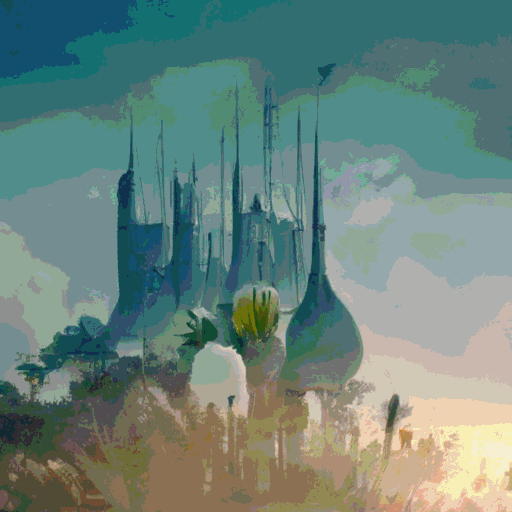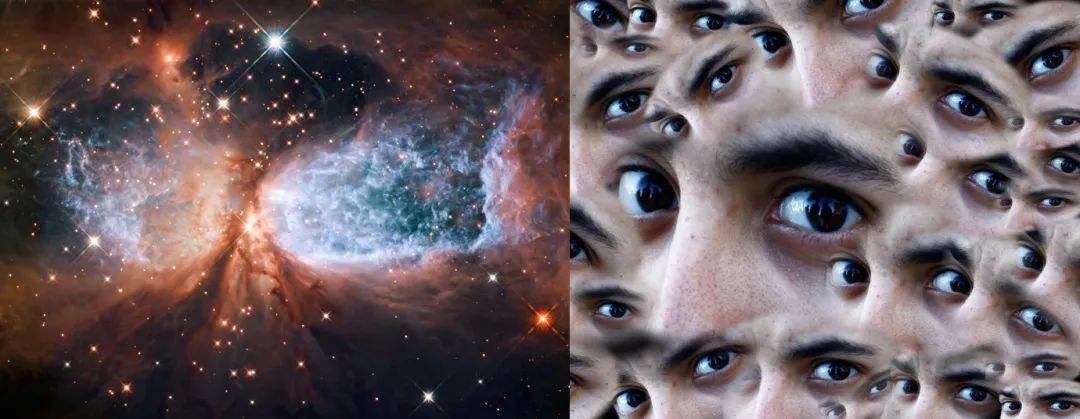date
type
status
slug
summary
tags
category
icon
password
URL
August 24, 2018 • 12 min read
by Global AI Creative Competition, mp.weixin.qq.com • See original

This is not just a contestant interview
Nor is it merely a contest entry review
It may also be a great attempt to define "AI Art" through practice.
- "Can this AI visual work be defined as an artistic creation? Compared to handmade Photoshop, is the use of algorithms fundamentally different in artistic creation, or is it simply an enhancement of a tool?"
Contestant Introduction
Contestant: Wang Zheng

Wang Zheng: Graduate of University College London (Master of Architecture) and Central Academy of Fine Arts (Bachelor of Architecture). During school, he served as the President of the Student Union at the Central Academy of Fine Arts and was an assistant in the CNC workshop at the East London University Graduate School. He has worked at Kengo Kuma Associates and CCDI as a professional architect. In 2016, he co-founded DreamDeck (a national high-tech enterprise) with alumni, focusing on the practical applications of 3D printing technology, artificial intelligence, and virtual reality.
Contestant: Meng Shengyu

- Meng Shengyu: Master of Architecture from University College London, AI Product Manager at DreamDeck Beijing Deck Smart Technology Co., Ltd.; architect, formerly worked at JDS in Denmark and MLA+ Studio in Shanghai, Netherlands. He is currently engaged in cross-disciplinary research related to architecture, artificial intelligence, GIS, and bionic cities.
1. The Beauty Captured by the Algorithm

One image is of a nebula captured by the Hubble Space Telescope, and another is of an eye-filled picture that triggers trypophobia. These two young architects—Wang Zheng and Meng Shengyu—selected them with a discerning eye. After being processed by an AI algorithm, they eventually created the "Eyes in the Dark Forest" AI visual artwork series for the GAAC competition: countless black-hole-like eyes hidden in the nebula, with a magnificent scene permeated by an eerie chill of being watched by an unknown source.

Meng Shengyu, one of the creators, said: "The inspiration comes from Liu Cixin's novel The Three-Body Problem, where the 'dark forest' state of the universe is described. Every civilization carefully hides in this forest while trying to destroy others that are discovered. This starkly contrasts with humanity's imagination of a warm universe. I wonder if, behind the brilliant starry sky we gaze up at, countless cold eyes are also watching us."


Meng Shengyu and his collaborator Wang Zheng overlaid the two images using Google Deep Dream, then used the Neural Style Transfer algorithm for style adjustments, and finally did some manual tweaking with Photoshop.
In addition to this piece, they submitted another visual artwork called "Forest in the City / City in the Forest." This creation is derived from the architects' everyday reflections.
"From a geometric perspective, cities and forests are quite similar... constant comparisons and learning between the two... ultimately led to a series of visual images that are neither cities nor forests but both."

- "The relationship between cities and forests is both contradictory and intricately linked. City dwellers hope for their cities to be like forests, closer to nature, while people outside the city wish to move to urban areas or have their place become urban.Thus, we see cities constantly being greened, while forests are continuously occupied and cut down to become cities," Wang Zheng said.
"From a geometric perspective, cities and forests are quite similar," Meng Shengyu added.

Image: Forest in the City
This similarity, yet contradiction, inspired them. They used the CycleGAN algorithm, compiling a training dataset with publicly available images of cities and forests, enabling the algorithm to learn by comparing the two. This converted forest images into cities and city images into forests, eventually forming a series of visual images that are neither cities nor forests but both.

Image: City in the Forest
2. Process-Oriented, Open Results
Reflecting on the creative process, Wang Zheng and Meng Shengyu both felt that although AI creation sounds cool, finding an appropriate algorithm tool for the creative form made the process neither too complex nor too time-consuming.
For "Eyes in the Dark Forest," for example, image overlaying took less than a minute, and style adjustments depended on whether the algorithm had learned that style—sometimes taking just a few seconds, sometimes several hours.
Compared to traditional art creation, such as painting or photography, can this piece be defined as an artistic creation? Is the use of algorithms fundamentally different from manual Photoshop, or is it just a tool enhancement?

Image: Marcel Duchamp (1887-1968)
Wang Zheng and Meng Shengyu believe that their visual artwork inherits the tradition of "conceptual art" represented by Marcel Duchamp in the early 20th century and "pop art" proposed by Richard Hamilton since the 1950s.

Image: Collage by Richard Hamilton (1922-2011)
"Just what is it that makes today's homes so different, so appealing?"
In 1917, Marcel Duchamp exhibited an upside-down signed urinal as a work at the Independent Artists Exhibition in New York, sparking the conceptual art movement.

Image: "Fountain"
Signifying that ready-made objects became the core of Duchamp's artistic concepts
Wang Zheng and Meng Shengyu believe that **the "concept" put forth by conceptual art is the direct driving force behind artistic creation; a subject with subjective consciousness creates or appreciates a form of art on the object using "external objects"—like a manufactured urinal. This means the artist surrenders the creative sovereignty, and only in the audience's doubt and reflection is the entire artistic creation completed. Pop art, on the other hand, widely used ready-made magazines, newspapers, and commercial symbols for creation.

Image: Andy Warhol's "Marilyn Monroe"
Massively quoting symbols from popular culture
Like Duchamp, both Wang Zheng and Meng Shengyu used external sources—images provided by others—in their visual works. Similarly to pop art, the base images they chose are more akin to everyday images rather than copyrighted artistic works.


Image: Photography sourced from public domain licenses
With the addition of AI algorithms, Wang Zheng and Meng Shengyu felt their works diverged from those of their predecessors.
- Meng Shengyu borrowed a concept from computer programming—"process-oriented"—to explain this difference."In traditional art creation, the process is 'object-oriented,' such as painting, where the painter directly paints on the canvas, constantly facing a changing outcome**; but we use AI algorithms, adjusting the materials, tools, and creative process according to creative needs, without directly controlling the result. To a large extent, the outcome is determined by a 'black-box' operation of the algorithm."

Forest in the City, City in the Forest
For "Forest in the City / City in the Forest," this set of images was generated through algorithmic learning. The creators built the training dataset, decided what base images to use for training, and ultimately determined which generated images best matched their creative intent.
They call their creation "open-source art." Aside from the creative thought and process, the materials and tools are borrowed "external objects," and many of the AI algorithms are also open-source. "Compared to traditional art, creators spend less time learning creative skills, and mastering creative tools is easier, allowing them to focus more on creativity. The threshold for artistic creation has been lowered, resulting in a democratization of art." Meng Shengyu said.
They also acknowledged that the current creations still have creators as the more active participants, with AI playing a relatively passive role. "With the development of AI technology, it's very possible that AI might take a more active role in creation in the future, even becoming the creator itself," Wang Zheng said.
3. Accidental Discoveries of New AI Visions

Contestants Wang Zheng and Meng Shengyu
As classmates from University College London (UCL), Wang Zheng and Meng Shengyu originally didn't plan to experiment with avant-garde art. Their collaboration with AI came somewhat by accident.

The rendering on the left has stronger lighting effects and realism compared to the right.
- Architects need to create renderings, but the preview images generated by modeling softwaretend to be flat, with weak lighting and missing details, often requiring tedious and time-consuming post-production rendering and editing**. After learning about GAN algorithms, Wang Zheng and Meng Shengyu initially intended to "slack off a bit" by building training datasets of renderings and raw images, using algorithms to create renderings and skip the manual steps of setting up lighting and textures. This reduced the time required for traditional rendering processes, minimized the demands on computer specs for post-rendering, and improved rendering efficiency.

Image: AI Optimized Architectural Rendering
They also tried letting the algorithm color line drawings.

Instantly generating multiple color schemes

"We found that the algorithm's performance was quite unstable. Sometimes it didn't do well, but at other times, it produced surprising results, which we had not anticipated, as if the algorithm had developed its own ideas." Meng Shengyu said. Learning about the GAAC competition sparked the idea of creating with AI algorithms.
For creators interested in exploring AI art, Wang Zheng and Meng Shengyu believe it's a brand-new, undefined field with endless possibilities. "Currently, creators need some computer skills, and AI algorithms are still developing, so the user interface of existing AI art software based on the latest algorithms isn't very friendly."
Dream Deck
Both are part of Dream Deck, a company closely associated with cutting-edge technology. Previously, they experimented with projects combining technology and art, such as 3D-printed cheongsams and jewelry.

3D Printed Cheongsam—Parametric Design and 3D Printing Based on Biological Algorithms
A friendly advertisement~ (winking face)
Competition Overview and How to Participate?
Global AI Art Competition
"AI Art" represents an inevitable collision and fusion between science and art under the new technological revolution. "AI Art" is both a profound iteration of AI technology itself and a new exploration of future human art. This year marks a critical point in the commercialization and application of AI across various fields, and the "GAAC" project is a bold attempt by the Tsinghua University Research Center for Art and Science, along with Tsinghua University's Art and Technology Innovation Base, ArtReview Network, and InnoAngel Fund, to seize the historical opportunities of technological transformation and artistic innovation and address the new proposition of "AI Art."

The "GAAC" project focuses on the theme of "AI Art" and proposes a "Trinity" strategy. The "Trinity" refers to competition operation centered around artwork evaluation, results promotion with a focus on commercial exhibitions, and platform-building aimed at investment and commercialization. The "unity" refers to establishing a vertical community and industrial alliance for "AI Art."

Written/Edited by Fu Shuang & Liu Conglin
- 作者:Simon Shengyu Meng
- 链接:https://simonsy.net/article/GAAC-en
- 声明:本文采用 CC BY-NC-SA 4.0 许可协议,转载请注明出处。
相关文章










